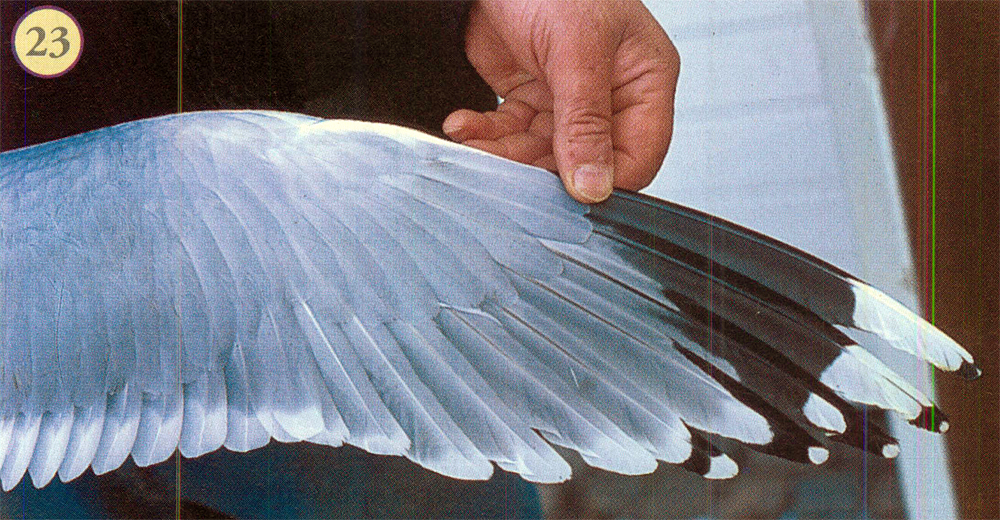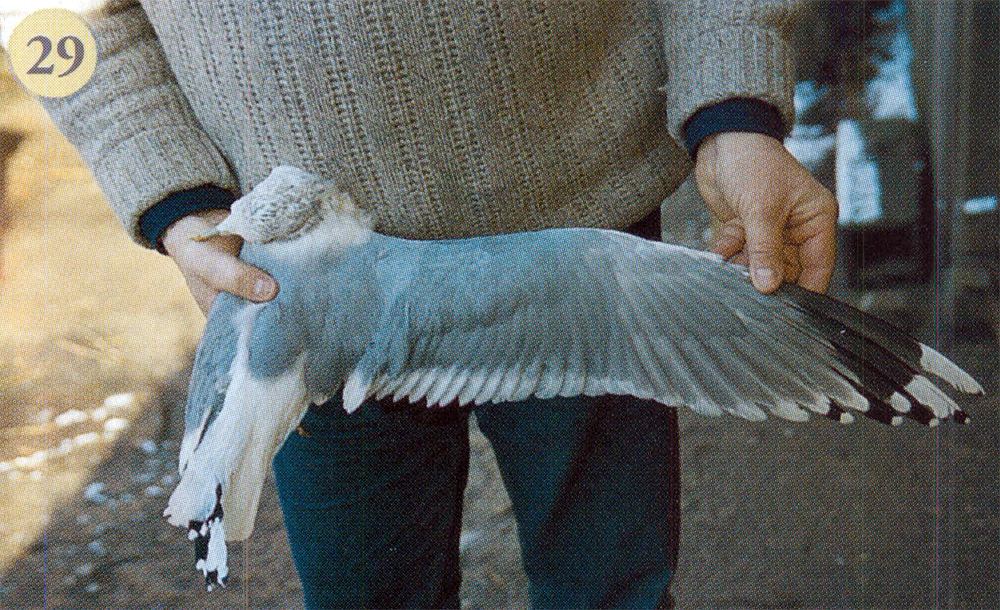 Mew Gull Larus canus canus; heinei; kamtschatschensis; brachyrhynchus
Mew Gull Larus canus canus; heinei; kamtschatschensis; brachyrhynchus
(last update: March 12, 2012)
Mew Gull heinei SVS 7143763 5cy/8cy, 11 January 1997 & 04 March 2000, Malmö, Sweden.
First image is figure 23: 7143763 (362/0) advanced four-year old bird (5CY), probable heinei. 11 January 1997. Originally ringed 29 January 1994. Compare to fig 29, for 7-year old plumage.
We have 15 proven four-year old birds in the data set. The majority of these birds have two or three mirrors and black on six primaries (range 5-7). The alula is dark on three of them, while two birds have small dark markings on the primary coverts. Three out of 15 have a mirror on P8. All 15 birds have completely white tails. The most mature looking four-year old bird is shown in fig 23 (below).
Our material indicates that the Mew Gull attains a mature plumage in its fourth year (4CY-5CY). After the fourth year, only minor changes occur in the plumage resulting in slightly more white and less black in the wing-tip; for example, the mirror on P10 may merge with the white tip in some individuals. Such slight changes in wing-tip pattern are illustrated by the bird below, four years old and seven years old respectively.
Figure from:
Is it possible to age subadult Mew Gulls Larus canus?
by: Kenneth Bengtsson & Lennarth Blomquist, publication in: Anser 2-42(2003): p 73-92.

Below is figure 29: 7143763 (362/0) seven-year old bird (8CY), probable heinei, 04 March 2000. Same bird as in fig 23; mirror on P10 now merged with white tip and suddenly a black spot on P5.
Our seven seven-year old birds show 2 or 3 mirrors, black on 5 to 7 primaries and white tip on P7-P9. Fig 29 (below) shows a seven-year old bird which is the same individual as the four-year old bird in fig 23. There are slight differences between these plumages, especially the wing-tip pattern changed gradually throughout the years: the mirror on P10 is now merging the white tip (broken band on P10), and suddenly it has developed a black spot on P5 (these characters were not present as four-year old bird). Fig 30 shows a canus (breeding bird in Malmö, killed in traffic) on which the black sub-terminal band is strongly reduced; this is the only bird showing this amount of white on P10 in our set of 73 photo-documented 3-12 year-old birds. In the reference-group of 100 anonymous adult birds (no certainty about exact age) we found this character on six birds.
